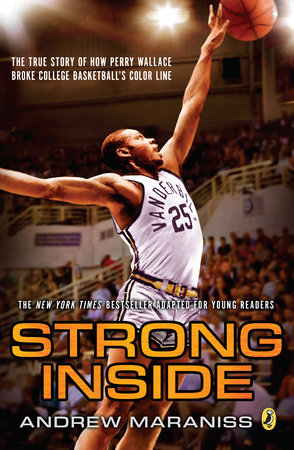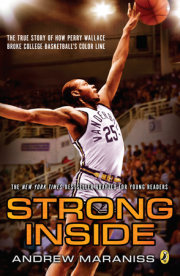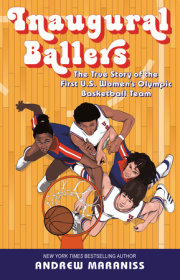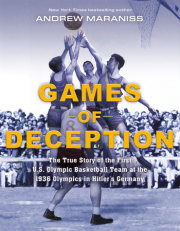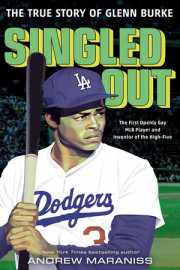Dear Readers: To accurately and vividly convey the racism that Perry Wallace and others encountered during certain scenes described in this book, the derogatory language they heard at the time is included here without edits. It would be a disservice to the reader and the heroes of this story to whitewash history by sanitizing these epithets.Chapter 1 A Dangerous PlaceIf you take a look at the Vanderbilt University basketball schedule for the 1966–67 season and search for the game dated February 27, you’ll see it was the day the Vanderbilt Commodores traveled to Starkville, Mississippi, to play the Mississippi State Bulldogs. But that day meant something much different to one member of the Vanderbilt basketball team.
For Perry Wallace, February 27, 1967, will always be remembered as the day he visited hell on earth.
***From the very moment Vanderbilt’s flight from Nashville landed in Mississippi, a dangerous place for African Americans ever since the days of slavery, it was obvious the plane had delivered Wallace and his only other black teammate, Godfrey Dillard, straight into the heart of intolerance.
When the small propeller plane landed on a gravel runway surrounded by tall trees, Dillard thought, This place is backwoods. From the airport, a bus delivered the Commodores to their hotel, where a group of white students milled around, yelling at Wallace and Dillard and banging on the bus. As the Vanderbilt players walked into the Holiday Inn, all the white folks in the lobby turned around and stared at the two black players. They could not have felt more unwelcome.
Sleep did not come easily for Wallace and Dillard that night. As members of Vanderbilt’s freshman basketball team (in those days, freshmen couldn’t play on the varsity), they were about to become the first African American basketball players ever to play a Southeastern Conference game in the state of Mississippi.
Prior to the trip, Wallace told a Nashville sportswriter that he hadn’t thought much about what might lay ahead in Starkville. “Schoolwork and basketball practice keep a man’s mind on other things,” he said. “However, I certainly do wonder just what sort of reception we’ll get.”
In truth, Wallace had thought quite a bit about the trip, bracing himself for the hatred he suspected he and Dillard would encounter. “You knew you were going to get hit in some way,” he recalled years later. “It was just a question of how bad was it going to be.”
On game day, Wallace contemplated his surroundings. He was troubled by what he knew of Mississippi: less than three years had passed since three young civil rights workers had been murdered only about sixty miles from Starkville, and less than a year had passed since James Meredith, the first black student to attend the University of Mississippi, was shot in broad daylight, even while surrounded by FBI agents. But it wasn’t what he knew that concerned Wallace the most; it was the unknown.
“That’s the problem for pioneers,” he recalled. “You don’t know what could possibly happen to you. When you don’t know what’s going to happen, the sky is the limit.”
***It is possible that the cramped visitors’ locker room in the bowels of the Mississippi State gym was always a stinking mess, but when Godfrey Dillard and Perry Wallace walked in, they took stock of the filthy surroundings and believed that what they saw and smelled was an attack directed squarely at them, a pair of unwanted guests: there were toilets overflowing, towels scattered everywhere across a dirty floor.
Game time approached, and the Commodores made their way from the locker room to the portal that led to the court, most of the players mentally preparing for a basketball game, Dillard and Wallace bracing themselves for the unknown, feeling like they were at the very apex of a roller coaster, their stomachs briefly suspended as if at zero gravity.
And then out of the tunnel and onto the court and, boom, the sensation of the rapid drop, the too-bright arena lights searing their eyes, the ringing of cowbells (a Mississippi State tradition), the piercing screams from the fans jammed close to the court, flashes of light and sound and eruptions of hate from every direction. Two young black kids exposed and surrounded in the heart of Mississippi, there for the taking.
Go home, niggers! We’re going to kill you, coons! We’re gonna lynch you! Forty years later, the scene stood out in teammate Bob Bundy’s mind; in his memory, as the Commodore freshmen warmed up under one basket, the whole bleachers were full of Mississippi State football players screaming at Perry and Godfrey. When Vanderbilt switched baskets, the football players followed them across the gym, continuing their threats.
Wallace’s blood ran cold; he had trouble gripping the basketball, his fingers gone stiff and numb. His mind raced to scenes from his childhood: the carload of punks who pointed a gun at him as he waited for the bus, the bullies who harassed him as he walked to school. He had seen racism bring out the worst in people.
But this was a whole new level of hate.
What had he gotten himself into?
Copyright © 2017 by Andrew Maraniss. All rights reserved. No part of this excerpt may be reproduced or reprinted without permission in writing from the publisher.

